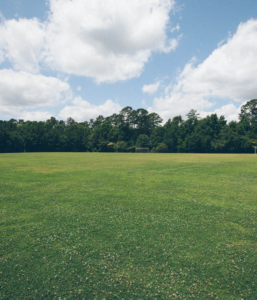In this article:
– Tips for reviving your lawn
– How to dethatch your lawn
– Why you shouldn’t overlook aerating your lawn
There’s nothing quite like a WA summer. No matter where you are, you’re sure to smell a few
sausages sizzling and the iconic combination of sea spray and sunscreen wafting through the
air. But there’s another classic sign of summer in our state: Brown lawns.
No matter the season, brown lawns in WA usually mean the underlying soil is unhealthy and
hydrophobic (i.e., water repellent). The good news for lawn lovers is that a brown lawn isn’t
necessarily a dead one. However, it does mean the lawn is sick and dying. It will take some
work—not just water—to fix the problem.
While most of the popular turf varieties in Australia are hardy and drought tolerant, when there’s
not enough moisture in the soil, your lawn will start to die. Heat stress will see this clever plant
draw water from its leaves to keep itself alive, which results in the leaves turning blue or brown,
curling up and becoming very dry. If you allow your lawn to die completely, it will not come back
in winter. You’d need to lay fresh turf and follow the advice below to achieve a healthy lawn in
the long-term.
To check if your lawn has died completely, closely examine the crown at the base of the leaves:
If it’s white to off-white, it’s probably still alive. With dedication and effort, you can salvage your
lawn.
The usual reflex with a brown lawn is to give it a good soak, but it’s not just water your lawn
needs to survive the heat. With some love and care, a healthy lawn should stay healthy, and a
sick, brown lawn can recover to its green state. Here are a few expert tips from Eva Ricci,
Executive Officer for the WA Turf Growers Association WA to bring your lawn back to life.
Top tips
Aerate your lawn in Spring before the heat of Summer
Aeration is the process of perforating the soil with small holes to allow air, water and nutrients to
penetrate your lawns grass roots. You can use a pitchfork or pronging shoes in small areas or
hire specialised equipment for larger areas. Try and get holes into the soil at a minimum of 8cm
apart.
Aeration is important in maintaining your lawn’s health but is often overlooked. It relieves
compaction, breaking up the soil and allowing water to more easily to reach the roots. Aeration
also helps manage thatch, allowing wetting agents to penetrate, as well as allowing air, water
and nutrients to get into the soil.
The best time to aerate warm season turf grasses (e.g., soft-leaf buffalo, couch, kikuyu and
zoysia turf grasses), is during spring before summer heat. However, if you have a brown lawn, it
is never too late to aerate. By aerating as the first port of call, your wetting agent application, top
dressing and fertilising will be far more effective.
Make aeration a priority every year if you have issues with hydrophobic, compacted soils and
thatchy lawns.
TIP: Before aerating, verti-mow or cut your lawn very low to remove thatch build up.
Dethatch your lawn to allow water and nutrients to reach
the roots
Lawn thatch is the spongy layer of mainly dead turfgrass tissue lying between the green
vegetation of the grass and the root system and soil below. If the thatch layer becomes thicker
than about 2.5mm, it can intercept water and plant nutrients and restrict their penetration to the
root zone. Thatch can also harbor disease organisms, contributing to other lawn problems. Plant
parts which make up a thatch layer are resistant to decomposition, so it’s important to keep on
top of this common lawn issue.
Dethatching is recommended every few years at least, depending on the build-up. Provided the
thatch isn’t too deep, you can dethatch by mowing turf low and hard with a rotary mower, or by
employing an expert to verti-mow with special equipment.
TIP: The best time to dethatch your lawn is in spring.

